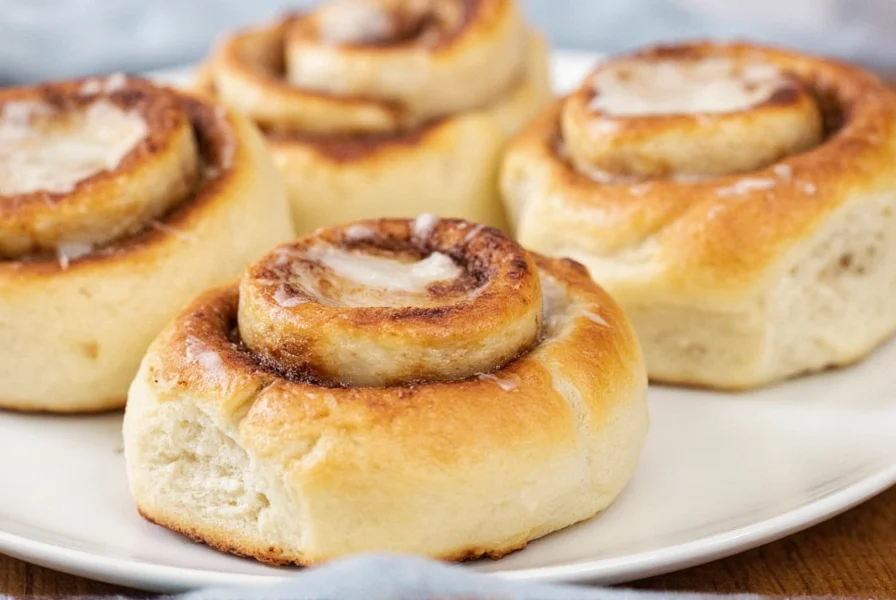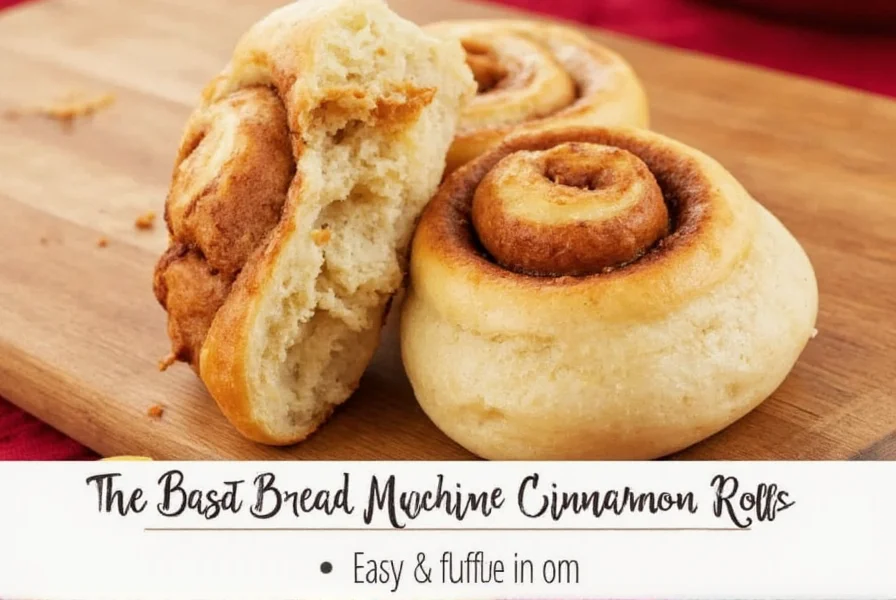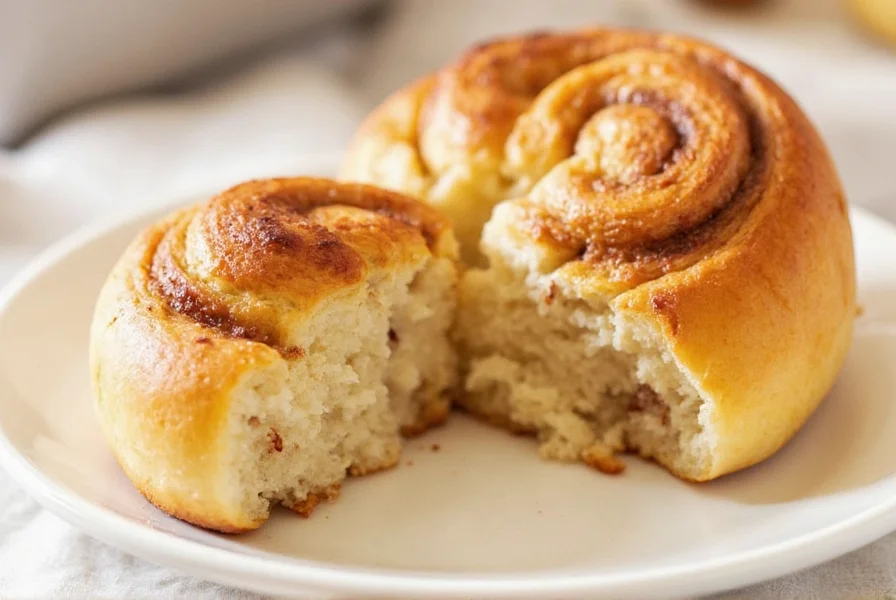There's nothing quite like the aroma of freshly baked cinnamon rolls filling your kitchen. For busy home bakers, the bread machine offers a game-changing solution that delivers consistent, restaurant-quality results with minimal effort. Unlike traditional methods requiring hours of rising and kneading, your bread machine handles the dough preparation while you prepare the filling and icing.
Why Bread Machine Cinnamon Rolls Work
The secret to successful bread machine cinnamon rolls lies in understanding how the machine processes dough. Modern bread machines have a dedicated "dough" cycle that kneads and allows the dough to rise perfectly before the second rise and baking. This cycle creates the ideal gluten structure for tender, pull-apart rolls without overworking the dough—a common issue with hand-kneading.
When using your bread machine for cinnamon rolls, you're leveraging consistent temperature control and precise kneading that's difficult to achieve manually. The machine's controlled environment ensures your yeast activates properly without killing it with water that's too hot—a frequent beginner mistake.
Essential Equipment and Timing
Before starting, ensure you have these items ready:
- Bread machine with dough cycle
- 9x13 inch baking pan
- Parchment paper or non-stick spray
- Pastry brush for butter application
- Sharp knife or dental floss for clean slicing
Total time: 2 hours 15 minutes (30 minutes active, 1 hour 45 minutes rising/baking)
| Ingredient | Measurement | Critical Notes |
|---|---|---|
| All-purpose flour | 3 cups (360g) | Spoon and level method—don't scoop directly |
| Whole milk | 1 cup (240ml) | Warmed to 110°F (43°C)—critical for yeast activation |
| Unsalted butter | 1/4 cup (56g) | Melted and cooled slightly |
| Granulated sugar | 1/4 cup (50g) | Plus 1/2 cup for filling |
| Active dry yeast | 2 1/4 teaspoons (7g) | Check expiration date—vital for proper rising |
| Eggs | 1 large | Room temperature |
| Salt | 1 teaspoon | Use fine sea salt for even distribution |
Step-by-Step Bread Machine Cinnamon Roll Recipe
Preparing the Dough
- Add all dough ingredients to your bread machine pan in the order specified by your manufacturer (typically liquids first).
- Select the "Dough" cycle and start the machine. Most machines complete this cycle in 1.5-2 hours.
- After 10 minutes of kneading, check the dough consistency. It should form a smooth ball that pulls away from the sides. If too sticky, add 1 tablespoon flour at a time. If too dry, add 1 teaspoon water.
- Allow the machine to complete the entire dough cycle, including the first rise.
Shaping the Rolls
- While the dough rises, prepare the filling: Mix 1/2 cup softened butter, 1/2 cup brown sugar, 2 tablespoons cinnamon, and 1/4 teaspoon salt until smooth.
- Once the dough cycle finishes, turn the risen dough onto a lightly floured surface. Gently punch down and shape into a 12x16 inch rectangle.
- Spread the filling evenly over the dough, leaving a 1/2 inch border around the edges.
- Tightly roll the dough from the long side, pinching the seam to seal.
- Using dental floss (not a knife), cut into 12 equal pieces for clean slices without squishing.
- Place rolls cut-side down in a greased 9x13 inch pan, cover, and let rise 45-60 minutes until nearly doubled.
Baking and Finishing
- Preheat oven to 350°F (175°C) while rolls rise.
- Bake for 22-25 minutes until golden brown and cooked through.
- While baking, prepare icing: Mix 4 oz cream cheese, 1/4 cup softened butter, 1 cup powdered sugar, and 1 teaspoon vanilla until smooth.
- Spread icing over warm rolls immediately after baking for maximum absorption.

Troubleshooting Common Issues
Even with a bread machine, cinnamon rolls can present challenges. Here's how to solve the most frequent problems:
- Dense or tough rolls: Over-flouring is the most common culprit. Measure flour correctly using the spoon-and-level method. Your dough should be slightly tacky but not stick to clean fingers.
- Rolls didn't rise properly: Check your yeast's expiration date and ensure milk temperature was between 105-115°F. Water that's too hot kills yeast, while cold water won't activate it properly.
- Filling leaking out: Don't overfill and ensure you leave that 1/2 inch border without filling. Chilling the rolled dough for 10 minutes before slicing helps contain the filling.
- Brown too quickly: Cover loosely with foil during the last 10 minutes of baking. Oven temperatures vary significantly—use an oven thermometer for accuracy.
Delicious Variations to Try
Once you've mastered the basic bread machine cinnamon roll recipe, experiment with these popular variations:
- Cream cheese swirl: Add 2 oz softened cream cheese to the filling mixture for extra richness
- Apple cinnamon: Fold 1/2 cup finely diced apples into the filling
- Maple pecan: Replace brown sugar with maple sugar and add 1/4 cup chopped toasted pecans
- Gluten-free: Use a 1:1 gluten-free flour blend and add 1 teaspoon xanthan gum

Storage and Reheating Tips
Proper storage maintains that fresh-baked quality:
- Room temperature: Store in an airtight container for up to 2 days. Place parchment between layers to prevent sticking.
- Refrigerator: Keep for up to 5 days. Reheat in microwave for 15 seconds before serving.
- Freezer: Freeze unbaked rolls on a parchment-lined baking sheet, then transfer to freezer bags. Bake from frozen, adding 5-7 minutes to baking time.
- Best reheating method: Place roll on a microwave-safe plate, cover with damp paper towel, and heat 10-15 seconds. The damp towel prevents drying while warming the roll evenly.
Frequently Asked Questions
Can I use instant yeast instead of active dry yeast in my bread machine cinnamon rolls?
Yes, you can substitute instant yeast for active dry yeast in a 1:1 ratio. The main difference is instant yeast can be mixed directly with dry ingredients without proofing. When using instant yeast, reduce the liquid temperature to 120-130°F since it activates at a higher temperature than active dry yeast.
Why did my bread machine cinnamon rolls turn out dry?
Dry cinnamon rolls typically result from over-flouring the dough or over-baking. Measure flour using the spoon-and-level method rather than scooping directly from the bag. Additionally, check your oven temperature with a thermometer as many run hotter than indicated. Remove rolls when they reach 190°F internally—they'll continue cooking from residual heat.
Can I prepare bread machine cinnamon rolls the night before?
Absolutely. After shaping the rolls and placing them in the pan, cover tightly and refrigerate overnight. The next morning, remove from the refrigerator 30 minutes before baking to take the chill off, then let rise at room temperature for 45-60 minutes until nearly doubled before baking as directed. This slow fermentation enhances flavor development.
What's the best way to prevent cinnamon roll filling from leaking out during baking?
To prevent filling leakage, leave a 1/2 inch border around the edges when spreading the filling. Don't overfill—1/2 cup of filling mixture is sufficient for this recipe. Chilling the rolled dough for 10-15 minutes before slicing helps solidify the butter. Finally, ensure your rolls have adequate space in the pan (at least 1/2 inch between rolls) to expand without挤压 the filling out the sides.
Can I make vegan cinnamon rolls in my bread machine?
Yes, you can create delicious vegan cinnamon rolls using your bread machine. Substitute the milk with unsweetened almond or soy milk, replace butter with vegan butter or coconut oil, and use a flax egg (1 tablespoon ground flaxseed mixed with 3 tablespoons water). For the icing, use vegan cream cheese and powdered sugar without bone char processing. The dough cycle works identically with these substitutions.











 浙公网安备
33010002000092号
浙公网安备
33010002000092号 浙B2-20120091-4
浙B2-20120091-4